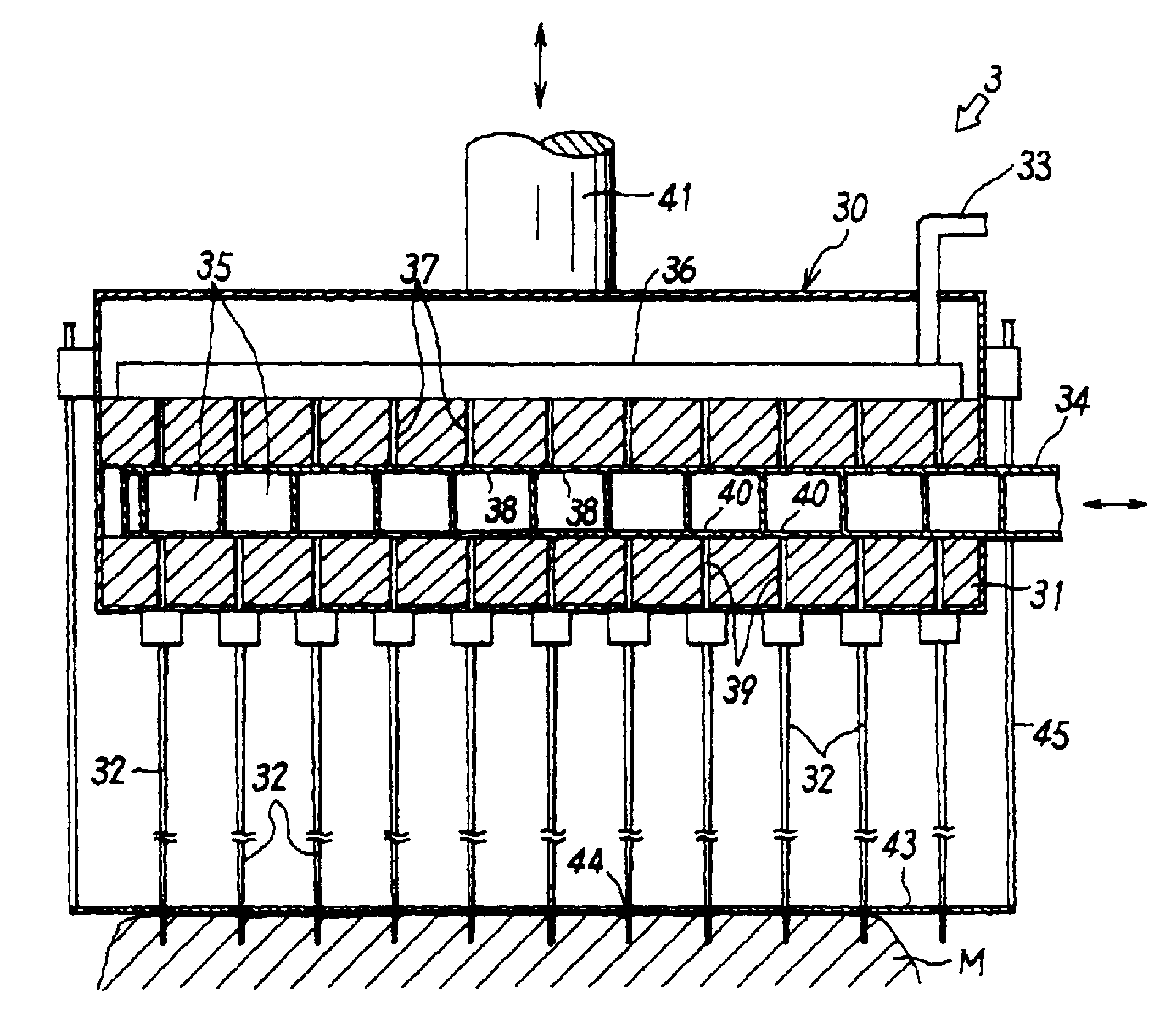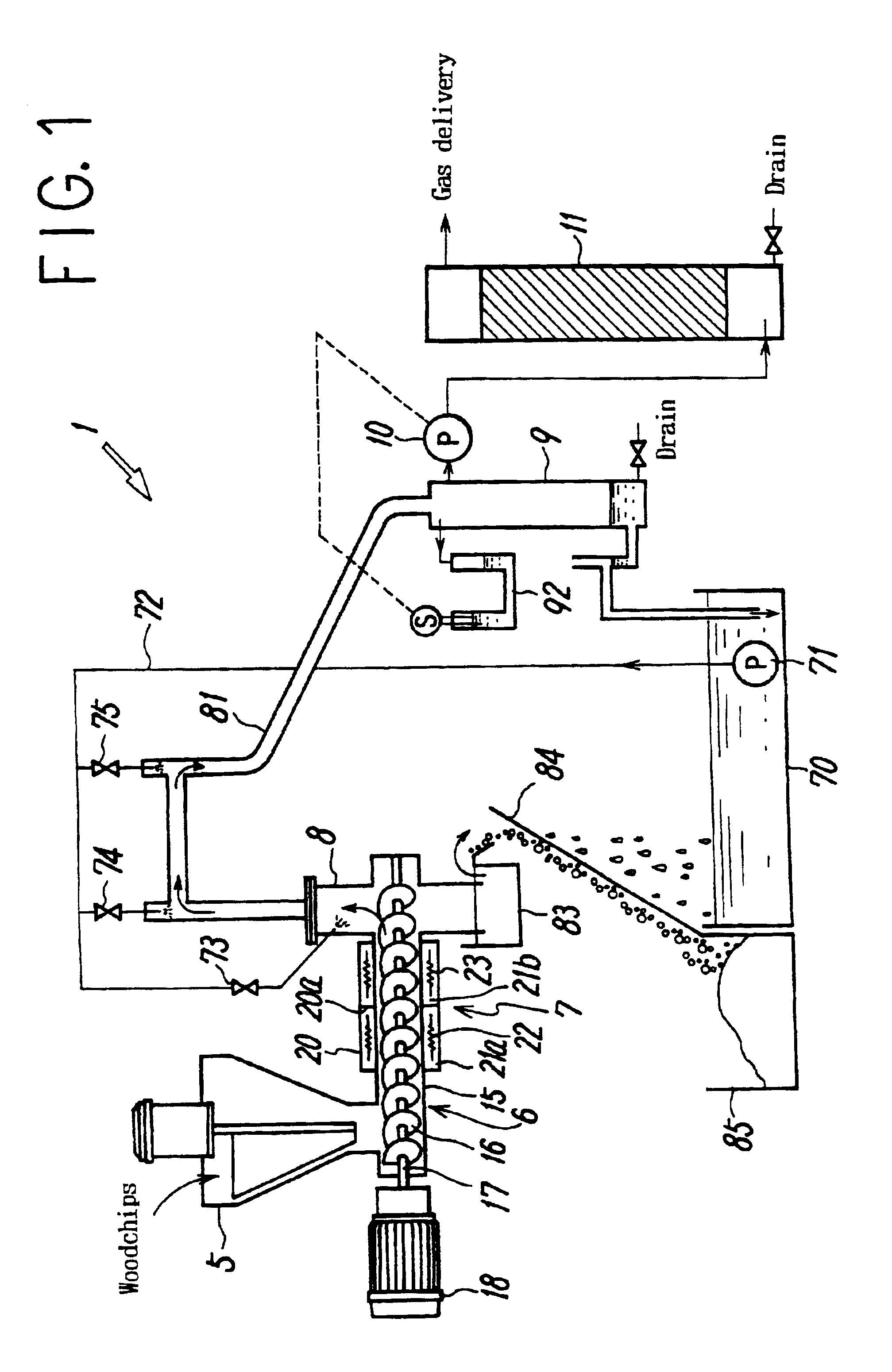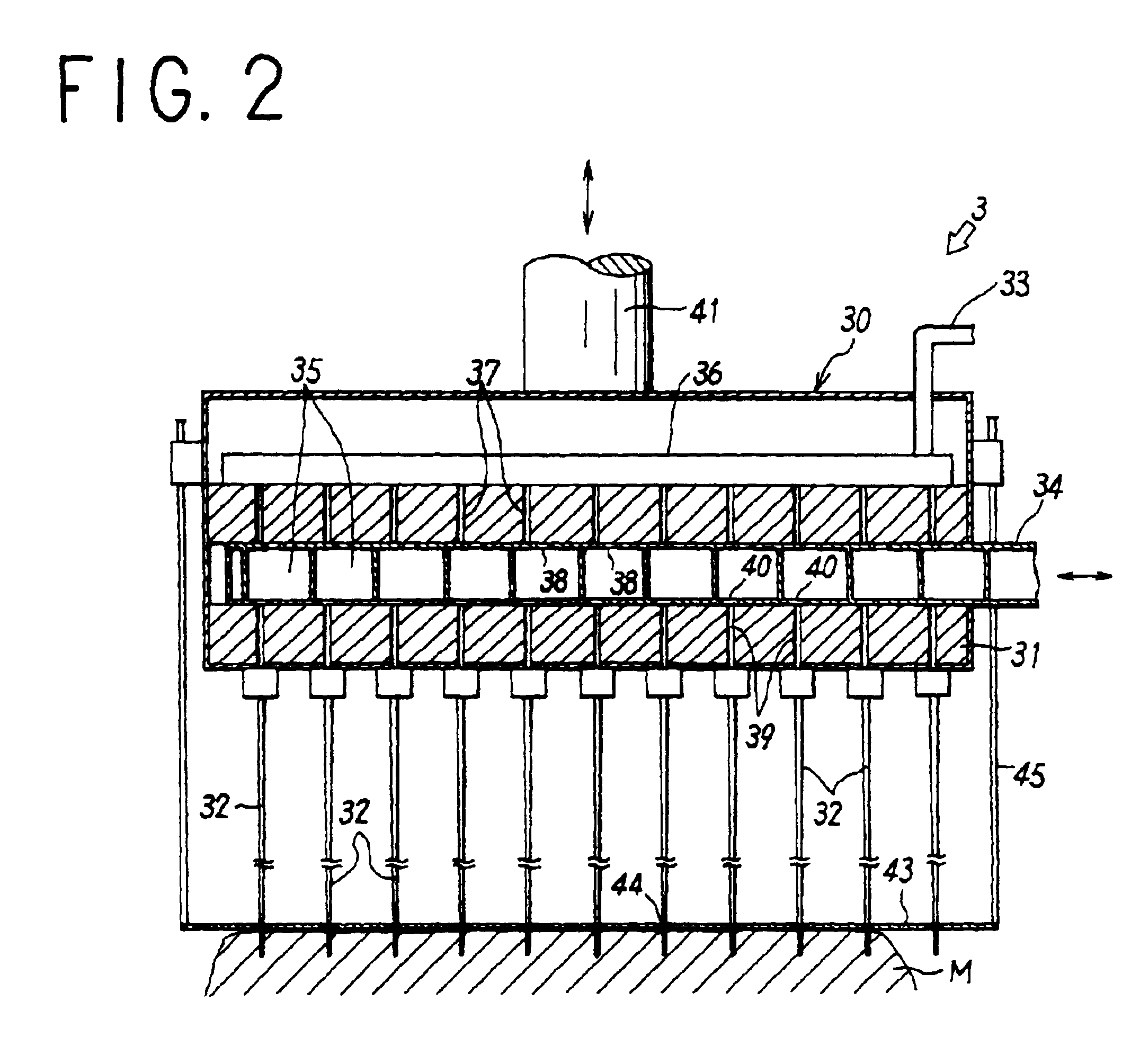Method for preserving tuna
a technology for preserving tuna and tuna meat, applied in the field of preserving tuna, can solve the problems of excessive preservation or cured tuna meat misreading, and achieve the effect of preventing deterioration and denaturation of components
- Summary
- Abstract
- Description
- Claims
- Application Information
AI Technical Summary
Benefits of technology
Problems solved by technology
Method used
Image
Examples
Embodiment Construction
[0036]In smoking of tuna meat according to the method of the present invention, smoke containing desired components must be generated first. A smoke-generating system as illustrated in FIG. 1 is used to generate the smoke.
[0037]The smoke-generating system 1 comprises a hopper 5, a screw transfer means 6, a gas discharge column 8, a gas-liquid separation column 9, a diaphragm pump 10, a smoke-filtering unit (a deodorizing column) 11, and a control means (not shown). Woodchips as a smoking material which have been adjusted, for example, in size, moisture content and type, are put into the hopper 5. The screw transfer means 6 transfers the woodchips supplied from the hopper 5 and has a heating means 7. The gas discharge column 8 is disposed downstream from the screw transfer means 6, and a high pressure wash water is supplied to the gas discharge column 8. A gas discharged from the gas discharge column 8 is conveyed into the gas-liquid separation column 9. The diaphragm pump 10 transfe...
PUM
 Login to View More
Login to View More Abstract
Description
Claims
Application Information
 Login to View More
Login to View More - R&D
- Intellectual Property
- Life Sciences
- Materials
- Tech Scout
- Unparalleled Data Quality
- Higher Quality Content
- 60% Fewer Hallucinations
Browse by: Latest US Patents, China's latest patents, Technical Efficacy Thesaurus, Application Domain, Technology Topic, Popular Technical Reports.
© 2025 PatSnap. All rights reserved.Legal|Privacy policy|Modern Slavery Act Transparency Statement|Sitemap|About US| Contact US: help@patsnap.com



